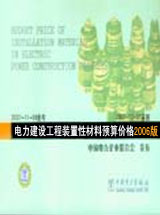
(上册)
出版者: 中国电力出版社
出版地: 北京
字数: 933 千字
页码: 1-463
开本: 32
分辑名:上册
语种:中
定价:180.00(共2册)
出版时间:2007-12
丛书多卷书否:是
书目简介:本册工具书共收录84条词条。

(下册)
出版者: 中国电力出版社
出版地: 北京
字数: 933 千字
页码: 465-1029
开本: 32
分辑名:下册
语种:中
定价:180.00(共2册)
出版时间:2007-12
丛书多卷书否:是
书目简介:本册工具书共收录93条词条。
| 词条 | 电力建设工程装置性材料预算价格 |
| 类别 | 中文百科知识 |
| 释义 |  (上册) 出版者: 中国电力出版社 出版地: 北京 字数: 933 千字 页码: 1-463 开本: 32 分辑名:上册 语种:中 定价:180.00(共2册) 出版时间:2007-12 丛书多卷书否:是 书目简介:本册工具书共收录84条词条。  (下册) 出版者: 中国电力出版社 出版地: 北京 字数: 933 千字 页码: 465-1029 开本: 32 分辑名:下册 语种:中 定价:180.00(共2册) 出版时间:2007-12 丛书多卷书否:是 书目简介:本册工具书共收录93条词条。 |
| 随便看 |
开放百科全书收录579518条英语、德语、日语等多语种百科知识,基本涵盖了大多数领域的百科知识,是一部内容自由、开放的电子版国际百科全书。